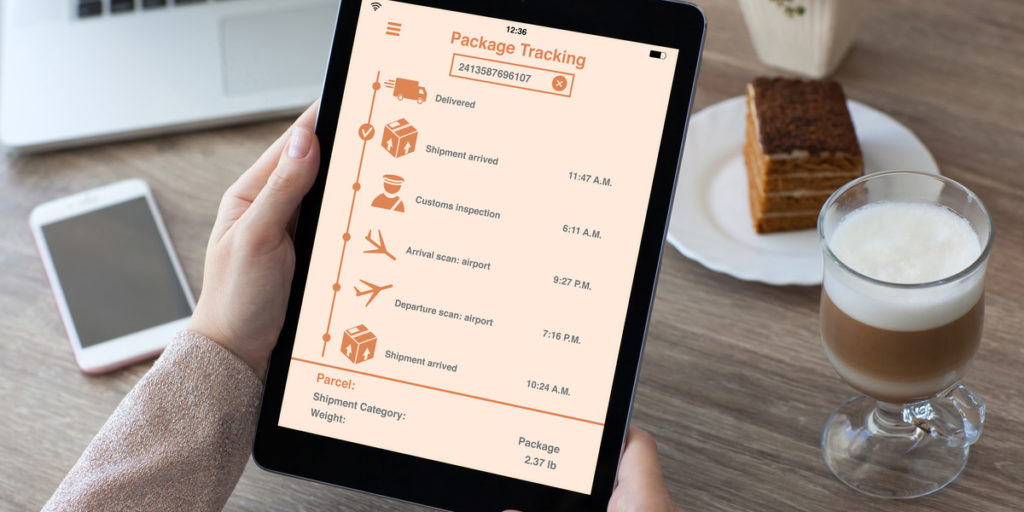As Covid 19 restrictions are showing signs of coming to an end (hopefully for good, this time!), consumer behaviour is changing. Even though experts say that consumers will largely remain online, it doesn’t change the fact that the general population is starting to spend less time at home – returning to the office, going to events, and generally resuming their social calendars. What does all of this mean for online retailers? There’s a higher chance that their customers won’t be in to accept deliveries.
More failed deliveries mean more pressure on last-mile and your carrier network, not to mention the effect on the overall customer experience.
We’ve already looked at timed delivery slots as a potential antidote to delivery disappointment, and we’re continuing the theme by giving the lowdown on another increasingly popular option that’s enabling retailers to meet their customers halfway (figuratively, that is…) – flexible delivery.
What is flexible delivery?
Flexible delivery enables customers to change the place and/or time of a scheduled delivery before it arrives at their shipping address. Customers typically receive an email from the retailer to let them know their package is on the way, highlighting the fact that they can make changes if they won’t be home and directing them to the carrier’s site where they can manage their delivery. Couriers will also send a text message as a parcel is en-route with an estimated time window for when the order will be delivered and a link that gives customers one last chance to redirect their package, all with the of avoiding a failed delivery.
The options that are available to customers in terms of managing their delivery vary from carrier to carrier, but include:
– Changing the date of delivery
– Redirecting the parcel to another address
– Leaving the parcel with a neighbour
– Delivering the parcel to a pickup point or depot (pickup points are generally located in convenience stores)
How does flexible delivery benefit retailers?
Offering flexible delivery benefits retailers in two, equally important ways. While customers not being in to accept deliveries isn’t the sole driver of failed deliveries (39% of deliveries fail due to inaccurate address data, for instance), it still has a significant effect on brands. 68% of businesses say failed or late delivery is a “significant cost” to their operation. Missed or failed deliveries don’t bode well for retailers that are trying to become more sustainable either – in 2020 alone, it’s estimated that 921,366,840 miles of delivery trips were on unsuccessful deliveries. Giving customers the chance to manage their deliveries helps retailers to move the dial in helping to fix the last-mile problem.
Secondly, flexible delivery puts customers in the driving seat. Whether the reason for a failed delivery is on the customer’s part or not, the blame will always sit with the retailer. 41% of consumers place blame for failed deliveries on retailers, and this has an impact on brand reputation, and customer retention. By giving customers the heads up that their orders are on the way and giving them the opportunity to make changes, it shifts the onus to them in a helpful way.

Staying on track
The success of flexible delivery rides on the use of sophisticated order tracking and accurate delivery timeframes. Without accurate tracking, flexible delivery simply can’t exist. Carriers need to feed real-time updates to customers. 81% of UK shoppers consider tracking updates as important, so it’s absolutely vital to have shipping and tracking updates triggered at the right time to avoid getting into a situation where customers unnecessarily miss the window of opportunity to make changes to their deliveries.
Meanwhile, retailers need to communicate the option of changing delivery details to shoppers. It might be tempting for brands to leave this information at the bottom of a confirmation or dispatch email so as to not encourage customers to make changes willy nilly. However, as with all things delivery-related, transparency and clear communication will always trump ambiguity. Retailers need to think of it in the same way as they would if they display information about the environmental impact of each delivery option on their checkout page. By informing customers about certain implications around deliveries, it helps them to make more mindful decisions.
So why not take it a step further? If retailers are working with carriers who facilitate flexible deliveries, they can take the opportunity to educate their customers on the impact of failed deliveries, and highlight the various changes that they can make to their delivery if they need to.
However, it’s important to remember that customers are only likely to make changes to their orders if they are aware of the estimated day and time that the order is scheduled to arrive. If the timeframe is too broad or general, customers don’t have the intel they need to request a change, and run the risk of missing the delivery, or not having time to make changes it as it’s en-route to them. Therefore retailers need to be able to connect carrier data with their customer systems to not only inform customers of their options at various touchpoints of the dispatch journey, but also to gain future insight into when and why changes are requested, to improve the delivery experience over time.
It’s challenging for retailers to ensure that they are meeting customer expectations. By putting customers in the driving seat by allowing them to make changes to their order, brands can improve the last-mile journey and significantly reduce delivery disappointment.
Want to learn more about how Scurri connects carrier and customer systems? Talk to us today!

AUTHOR
Michelle McSweeney Content Marketer
